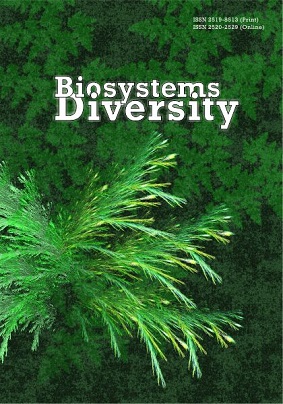Method of individual forecasting of sow reproductive performance on the basis of a non-linear canonical model of a random sequence
Method of individual forecasting of sow reproductive performance on the basis of a non-linear canonical model of a random sequence
Author(s): I. P. AtamanyukSubject(s): Agriculture, Policy, planning, forecast and speculation, Transformation Period (1990 - 2010), Present Times (2010 - today)
Published by: Дніпропетровський національний університет імені Олеся Гончара
Keywords: pig; individual forecasting of sow reproduction; non-linear canonical model of the random sequence;
Summary/Abstract: Improvement of sow reproductive performance is a key factor determining the efficiency of the pig production cycle and profitability of pork production. This article presents the solution of an important scientific and practical problem of individual forecasting of sow reproduction . The population used for the present study is from a pig farm managed by the Limited Liability Company (LLC) ‘Tavriys’kisvyni’ located in Skadovsky district (Kherson region, Ukraine). The experimental materials used for this study consisted of 100 inds. of productive parent sows of the Large White breed. The litter size traits – the total number of piglets born (TNB), number of piglets born alive (NBA) and number of weaned piglets (NW) – were monitored in the first eight parities over an eleven year period (2007–2017). The method of the forecasting of sow litter size is developed based on the non-linear canonical model of the random sequence of a litter size change. The proposed method allows us to take maximum account of stochastic peculiarities of sow reproductive performance and does not impose any restrictions on the random sequence of a litter size change (linearity, stationarity, Markov property, monotony, etc.). The block diagram of the algorithm presented in this work reflects the peculiarities of calculation of the parameters of a predictive model. The expression for the calculation of an extrapolation error allows us to estimate the necessary volume of a priori and a posteriori information for achieving the required quality of solving the forecasting problem. The results of the numerical experiment confirmed the high accuracy of the proposed method of forecasting of sow reproduction. The method offered by us almost doubles the accuracy of forecasting of sow litter size compared to the use of the Wiener and Kalman methods. Thus, average forecast error decreases across the range of features TNB (1.71), NBA (1.68) and NW (1.25 piglets). Apparently, this may reflect a higher level of manifestation of the genetically determined level of individual sow fertility at the moment of piglet weaning. The higher adequacy of the developed mathematical model with regard to NW can be also due to the fact that the relations between sow litter size in different farrowings primarily have a non-linear character, which is taken into maximum account in our offered model. Given non-linearity, on the other hand, turns out to be a significant factor determining a lower estimation of the repeatability value for NW compared to the estimations for TNB and NBA. The use of the developed method will help to improve the efficiency of pig farming.
Journal: Biosystems Diversity
- Issue Year: 27/2019
- Issue No: 4
- Page Range: 309-313
- Page Count: 5
- Language: English

